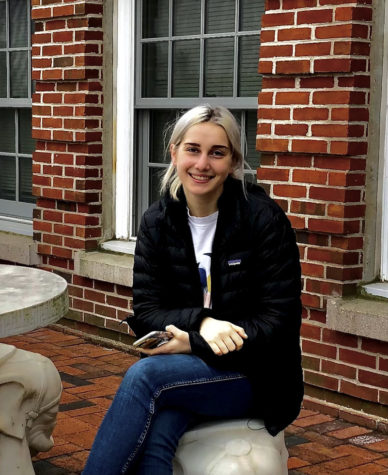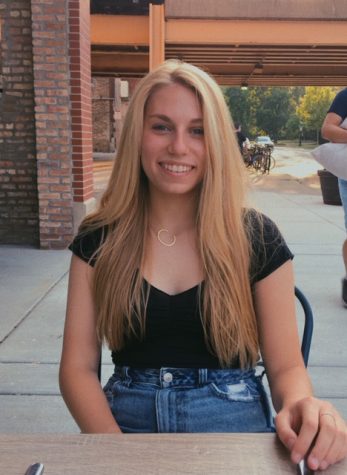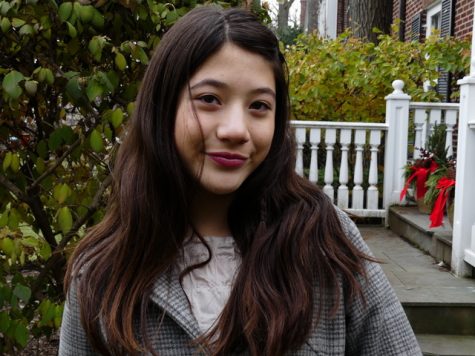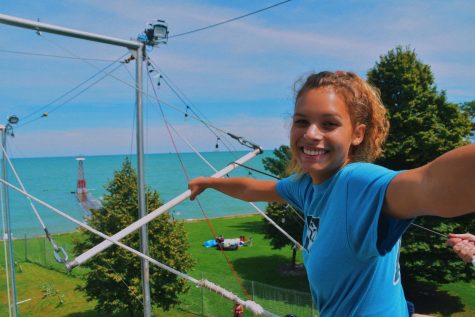The changing face of Evanston
November 8, 2019
A study published this past March claims Evanston hasn’t experienced gentrification, though some residents think otherwise. Four former and current Evanston residents and active community members weigh in on the changes they have seen in the Evanston community over the years.
Morris (Dino) Robinson Jr. is the Founder and Executive Director of Shorefront, a legacy center on the North Shore focused on preserving black history. He has lived in Evanston for the past 38 years and is an ETHS graduate.
“The city of Evanston participated in redlining the community. There was a municipal map that was drawn and the red line was where you don’t invest in. In the city of Evanston we have one community in Evanston that was redlined for no investment, no bank loans, no development and that is what we know today as the fifth ward and over time that depressed the area. The one area in Evanston that has housing and land that’s relatively affordable is the 5th ward. You have a lot of new investors coming into develop in that area.”
“Once you develop a house and rehab a house, many times your property taxes go up, and once that one property goes up, all the surrounding houses’ property taxes also go up. If you do enough of those, the property taxes go up enough, you start causing families to have to move because they can no longer afford the property tax or the property tax becomes a burden. Throughout these decades, these same families that have been here for generations and have always invested in the community, or tried to, can’t do so because of the restrictions in housing loans, business loans, and development loans.”
“I kind of joke around with some housing that is being developed as the gentrification house. It seems to follow a pattern of somebody buys a house and they do a complete rehab of it, and there are specific colors they use on the paint of the house like a shade of grey, a shade of blue, a shade of green, that identifies this house as the newly gentrified house. Now because of that, all the other houses in the area are going to go up in cost and start pricing out residential areas.”
“In this particular area in Evanston what I’ve noticed is that it’s like a two-tier type of gentrification process where you have the traditional minority group that was there, and there is a new introduction of a newer minority group but for lack of a better word, more palpable than that of the first group. That’s the first stage of gentrification. A black community is replaced by another ethnic group which is much more susceptible to a white group that wants to move into that area. It’s that three stage process.”
“Real estate studies have demonstrated that economically diverse communities are the most stable communities. This will take some time to do, not a couple years but decades to fix because of the longevity of home ownership. [We should] redevelop a lot of the communities to become mixed living quarters.”
Patrice Folke is an ETHS graduate and grew up in Evanston. She now lives in Skokie, Ill.
“I don’t live in Evanston now, and we moved up here in 1969 and then I graduated in 1982. Even when I didn’t live here and I would come back I would see all kinds of changes.”
“That might be one of the reasons why I didn’t return, taxes were too high. Taxes were too high and it’s sort of lost a certain feel it used to have, a sense of community. Northwestern wasn’t such a prevalent presence everywhere.”
“The other thing I have noticed was that Evanston was an independent community. We had department stores and a Marshall Fields there and now it almost feels like the downtown is in service to Northwestern. It’s like a mall for college kids.”
“I know for a fact people were out there protesting that one building that went up in place of a house over on Dempster and Pitner. The Greenhouse that’s a little further south on pitner has been sold and the plan is to put up more buildings. That neighborhood is going to be affected by that.”
Kris Hartzell is the Director of Facilities, Visitor Services and Collections at Evanston History Center. She has lived in Evanston her whole life, in both the 3rd and 7th wards.
“The downtown area has really grown commercially, compared to when I was younger. Old Orchard had taken a lot of the downtown commercial business, the stores and the traffic. It was languishing in the downtown, so it’s making a big resurgence.”
“Now, I’m a historian, so for the last ten years I’ve been studying how the architecture has changed in Evanston. I know that Evanston has always had the same business districts, due to the way it has developed from three separate communities into one.”
“The Main Street district has always been there, it hasn’t changed greatly in the scope of the business. Dempster St. and Chicago Ave. have grown in their scope; however, North Evanston used to be a separate town and they have always had their business district of Central Street.”
“Evanston was founded in 1854 and it was just what we know now as central Evanston, and there was a separate community of North Evanston and South Evanston. You don’t really know now when you were leaving one and entering another, but the communities used to leave undeveloped land between them as dividers. North Evanston merged with Evanston in 1874 and South Evanston in 1892.”
“We think the merged communities add to the level of activity in the town. It brings in a lot of people to visit and patronize the shops. It keeps locals invested in their community, rather than going elsewhere for a resource they might need.”
Steven Wool is a history teacher at ETHS. He has lived in Evanston his whole life, he has lived throughout all of Evanston, but predominantly in the 6th ward.
“Downtown Evanston, you have a lot of these high-end condominiums that are going for, you know, a million dollars. You know, I think that’s where Evanston is going toward. Right around Mason Park area, that whole area has started to grow. They’re tearing down all these houses. So you’re seeing neighborhoods– their ethnicity and their socioeconomic backgrounds completely changed.”
“Howard St. area was a rough area. I remember growing up in that area and now you’re starting to see all those big shopping malls around the train.”
“I think we’re losing some of the cultural aspects of the city. I think that, what’s a good thing, is there’s a larger influx of Hispanic and Latino families that are living in Evanston. When I went to Evanson, it was predominantly white and black, and there was a small Asian and a small Latino population. I think I could count on one hand how many Latino students I had in my class. And now the rise in Latino student population and families in the city is much different than it was when in the 1980s, which I think is a great thing. So diversity in Evanston is much different now than it was then.”
“The area that is dramatically changed the most is around the 2nd and the 5th ward areas. I had friends that lived in both of those wards and having traveled through those wards as a kid, or as a high school student, you can see a lot of money has been put into those wards and areas and it has actually priced out certain groups of people which is unfortunate. I don’t know if Evanston is gonna look the same. It’s starting to actually look much different than when I was a student here. It’s changing the ethnic and socio-economic face of the city.”














